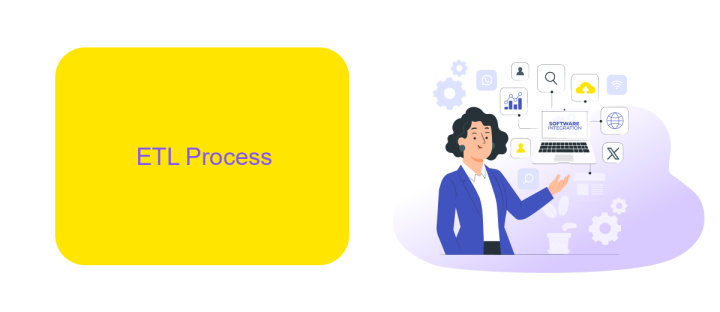ETL Data Analyst
An ETL (Extract, Transform, Load) Data Analyst plays a crucial role in managing and optimizing the flow of data within an organization. By extracting data from various sources, transforming it into a usable format, and loading it into data warehouses, these professionals ensure that accurate and timely data is available for decision-making processes, driving business intelligence and operational efficiency.
Introduction
The role of an ETL Data Analyst has become increasingly crucial in today's data-driven world. These professionals are responsible for extracting, transforming, and loading data from various sources to ensure that businesses can make informed decisions based on accurate and timely information. ETL Data Analysts play a key role in maintaining the integrity and accessibility of data, making it a valuable asset for any organization.
- Extracting data from diverse sources
- Transforming data to meet specific requirements
- Loading data into target systems
- Ensuring data quality and consistency
- Collaborating with stakeholders to understand data needs
One of the tools that can significantly assist ETL Data Analysts in their work is ApiX-Drive. ApiX-Drive facilitates seamless integration between various applications and services, allowing for automated data flows and reducing manual intervention. By leveraging such tools, ETL Data Analysts can focus more on data analysis and less on the complexities of data integration, ultimately driving better business outcomes.
ETL Process

The ETL process, which stands for Extract, Transform, Load, is a crucial methodology for data analysts. In the extraction phase, data is collected from various sources such as databases, APIs, and flat files. This data is then transformed to fit the analytical needs, which includes cleaning, filtering, and aggregating the information. The final step, loading, involves transferring the processed data into a data warehouse or another storage system where it can be easily accessed for analysis.
Integrating data from multiple sources can be challenging, but services like ApiX-Drive simplify this process. ApiX-Drive allows for seamless integration and automation of data flows between different platforms, ensuring that data is consistently and accurately extracted and loaded. By leveraging such tools, data analysts can focus more on the transformation and analysis phases, enhancing the overall efficiency and reliability of the ETL process.
Data Extraction

Data extraction is a critical step in the ETL process, involving the retrieval of data from various sources such as databases, APIs, and flat files. This phase ensures that the data is collected in a consistent and usable format for further processing and analysis. Efficient data extraction is crucial for maintaining data integrity and accuracy.
- Identify data sources: Determine the databases, APIs, and other systems where the required data resides.
- Establish connections: Use integration tools like ApiX-Drive to set up connections to these data sources, ensuring seamless and automated data retrieval.
- Extract data: Implement scripts or use ETL tools to extract the necessary data, ensuring it is in a standardized format for further processing.
Using services like ApiX-Drive can significantly streamline the data extraction process by providing pre-built connectors and automation capabilities. This not only reduces manual effort but also minimizes the risk of errors, ensuring that the extracted data is accurate and ready for transformation and loading into the target systems.
Data Transformation

Data transformation is a crucial step in the ETL process, where raw data is converted into a format suitable for analysis. This involves cleaning, structuring, and enriching the data to ensure it meets specific business requirements. By transforming the data, analysts can derive meaningful insights and make data-driven decisions.
During the transformation phase, various operations are performed to modify the data. These operations can include filtering out irrelevant information, aggregating data for summary statistics, and normalizing data to ensure consistency. Additionally, data transformation often involves joining data from multiple sources to create a comprehensive dataset.
- Data Cleaning: Removing duplicates and correcting errors.
- Data Aggregation: Summarizing data to provide insights.
- Data Normalization: Ensuring data consistency.
- Data Integration: Combining data from different sources.
Tools like ApiX-Drive can simplify the data transformation process by automating integrations between various data sources. ApiX-Drive allows you to set up workflows that automatically transfer and transform data, reducing manual effort and minimizing errors. Utilizing such tools can significantly enhance the efficiency and accuracy of the data transformation process.


Data Loading
Data loading is a crucial phase in the ETL process, where the transformed data is moved into the target data warehouse or database. This step involves ensuring that data is accurately and efficiently loaded without loss or corruption. Effective data loading requires careful planning and execution to handle large volumes of data, maintain data integrity, and ensure minimal downtime. Techniques such as batch processing, parallel processing, and incremental loading are often employed to optimize the performance and reliability of the data loading process.
Integrating data from various sources can be complex, but services like ApiX-Drive simplify this task by providing seamless integration capabilities. ApiX-Drive allows users to connect multiple applications and automate data transfers, ensuring that data is consistently updated and synchronized across systems. By leveraging such tools, ETL data analysts can streamline the data loading process, reduce manual efforts, and focus on analyzing the data to derive valuable insights. Utilizing integration services not only enhances efficiency but also ensures that the data loading phase is robust and scalable.
FAQ
What is ETL in data analysis?
Why is ETL important for data analysts?
What skills are necessary for an ETL Data Analyst?
How can I automate the ETL process?
What are some common challenges in ETL processes?
Routine tasks take a lot of time from employees? Do they burn out, do not have enough working day for the main duties and important things? Do you understand that the only way out of this situation in modern realities is automation? Try Apix-Drive for free and make sure that the online connector in 5 minutes of setting up integration will remove a significant part of the routine from your life and free up time for you and your employees.

